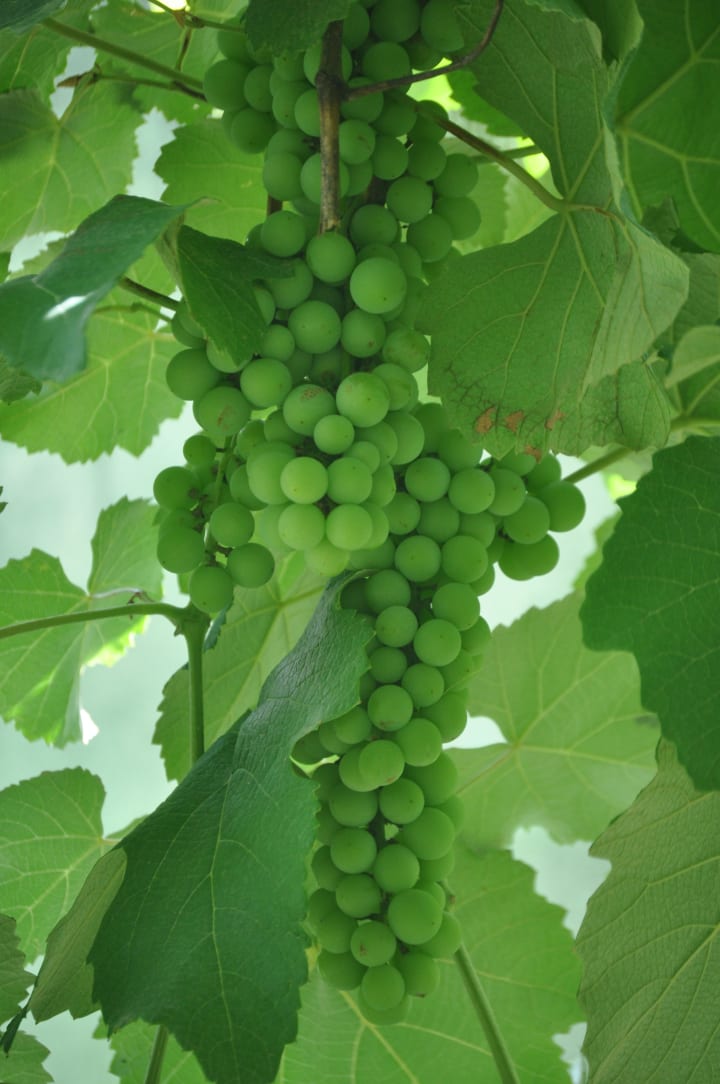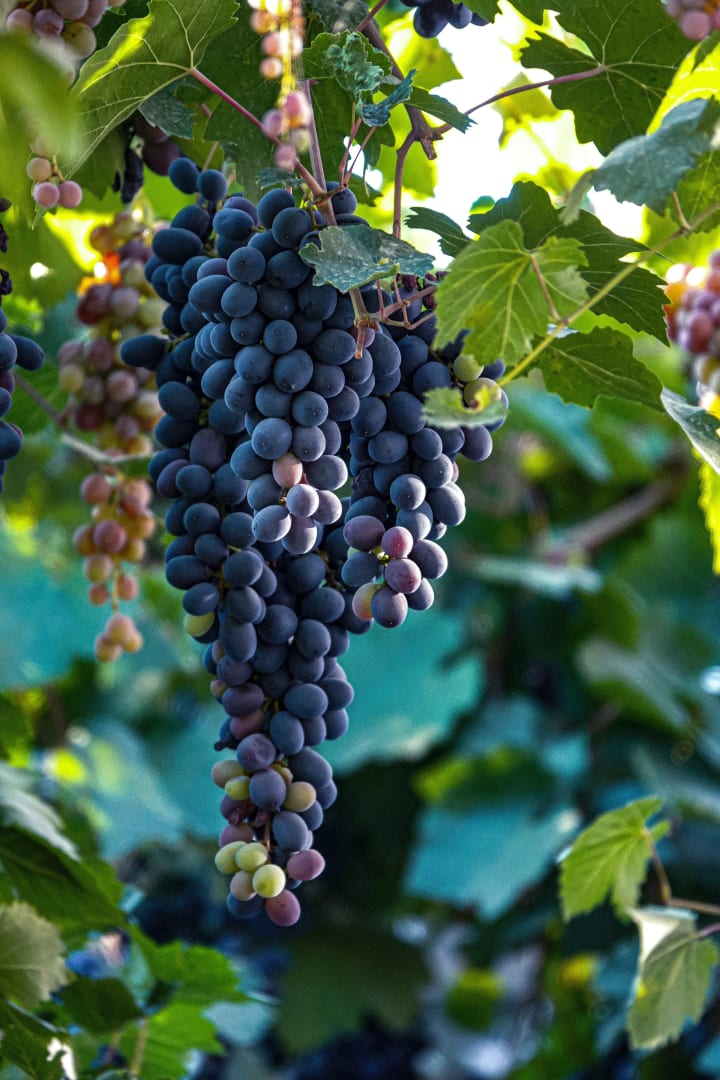Grape
The genus grape, or Vitis, contains between 60 and 80 species of vining plants that are native to the north temperate zone and are in the family Vitaceae.

This genus includes types that can be consumed as table fruit, dried to make raisins, or crushed to make grape juice or wine.
Major Species
All domesticated grapes that have reached maturity will ferment into a specific type of wine when crushed, and the majority of grapes can be dried or eaten fresh. However, the majority of standard or higher grade wines are made from the European wine grape (Vitis vinifera).
This grape has at least 5,000 known varieties, each with unique traits such fruit colour, size, and shape, juice composition (including flavour), ripening period, and disease resistance. They are produced in a wide range of climatic conditions, and numerous techniques are used to make wines from them. The numerous wine varieties that are available are a result of all these potential differences.
The economy is also important for a number of grape species in North America. Fox grape (V. labrusca) cultivars are used to make kosher wines, grape jelly, grape juice, and other "slipskin" grape products. Concord grapes and other "slipskin" grapes are descended from fox grapes.
It is believed that the summer grape (V. aestivalis) is the oldest grape cultivar in America. The vine is challenging to grow, but the fruit is ideal for creating wine. Artisanal wines and jellies are made from the southeastern United States' thick-skinned muscadine grape (V. rotundifolia).
Only three kinds out of the many thousands of domesticated grape varieties are utilised to make the majority of the raisins sold on the market, while 15 to 20 varieties are produced extensively for table grapes and a few varieties are used for canning.

Cultivation
Long, dry, warm to hot summers and cool winters are essential for the best development of wine grapes. Unprotected vines die in harsh winter weather; spring frosts that arrive after the vines begin to grow will kill the shoots and clusters. Grapes may grow in a variety of soil types, from blow sand to clay loam, shallow to very deep, extremely calcareous to non calcareous, and low fertility to high fertility.
Grafts, segments, or canes, as well as cuttings, are used to propagate commercial grape types. In a nursery, cuttings are typically grown for a year to establish roots. The grafts are made up of a piece of a fruiting variety's stem attached to a rootstock cutting. After being planted in the vineyard, the rootstock cuttings are field budded to the appropriate fruiting variety in late summer. To avoid the development of scion roots, the point of union of grafted or budded vines must be placed well above the ground.
To grow a vine with a suitable form, training is required. The young vine is cut, and its growth and pruning are both tied to a support. The most significant vineyard practice is pruning. With grape and sultana varieties, it is typically the only method of crop control, largely determining both the quality of the fruit and the wood for the following year. When a tree is pruned annually, 90 to 95 percent or more of the growth from the previous year is eliminated, leaving only the spurs, fruit canes, or both.
The grape is susceptible to a number of parasites, including Phylloxera, an eastern American vine louse that was introduced to Europe on American vines in the late 1800s and caused extensive vineyard damage before being finally stopped by grafting European varieties to American rootstock that was more resistant to this parasite.
When the grapes are at the best stage for the intended usage, they are picked. Wine grapes are picked when their sugar level is at its greatest, and the waxy covering on their skins traps the yeasts that will later aid in fermentation. Delays in harvesting may allow germs to damage the grape sugar or generate wine with an undesirable aroma.

Physical Characteristics
The grape is often a woody vine that climbs with the help of tendrils. The fruit is a berry from a botanical perspective. Grapes are a source of vitamin A and have minerals like calcium and phosphorus in them. Depending on the variety, every grape contains sugar (glucose and fructose) in varied amounts.
Any of the 60 plant species that make up the genus Vitis (family Vitaceae), which are indigenous to the northern temperate zone. These species include types that can be consumed as table fruit, dried to make raisins, or crushed to make grape juice or wine. The species most frequently used in the production of wine is Vitis vinifera. It can grow into a nearly upright shrub in dry areas.
Background and Domestication
For thousands of years, the Old World successfully raised Vitis vinifera, the species that is most frequently used to make wine. The long life and widespread distribution of the genus's species are demonstrated by the fossilised grape leaves, stem fragments, and seeds discovered in Neogene and Paleogene strata in the Northern Hemisphere (about 2.58–66 million years old).
Viticulture, the practice of growing grapes, predates civilization itself. The 4th (2400 BCE), 17th, and 18th dynasties of Egypt's hieroglyphics included information about the production of grapes and wine. The Bible claims that Noah established a vineyard. Wine was a common item among the Greeks in Homer's day.
About 600 BCE, the Phoenicians introduced the grape to France. Not later than the second century CE, the Romans planted grapes in the Rhine Valley. Pliny the Elder outlined 91 grape varieties, classified 50 different types of wines, and discussed vine-training techniques.
Grapes were transported into East Asia via India at the same time that grape culture began to spread to the west. The grape was transported to other areas as they were colonised, and today it is grown on every continent and all islands where the climate is suitable.

The conclusion
Grapes include a number of vital nutrients and potent plant chemicals that are good for your health. Despite having sugar, they don't seem to impair blood sugar management when consumed in moderation.
Most of the health advantages of grapes, including their anti-inflammatory, anti-diabetes, and anticancer qualities, are attributed to antioxidants like resveratrol.
They are also simple to incorporate into your diet and rather tasty. Fresh grapes are healthier than grape juice or wine and offer more advantages.
About the Creator
Fruits And Plants Diary - Get Insight
As a writer, here is the right place to access unique and interesting stories where people always enjoy reading through simple words.






Comments
There are no comments for this story
Be the first to respond and start the conversation.